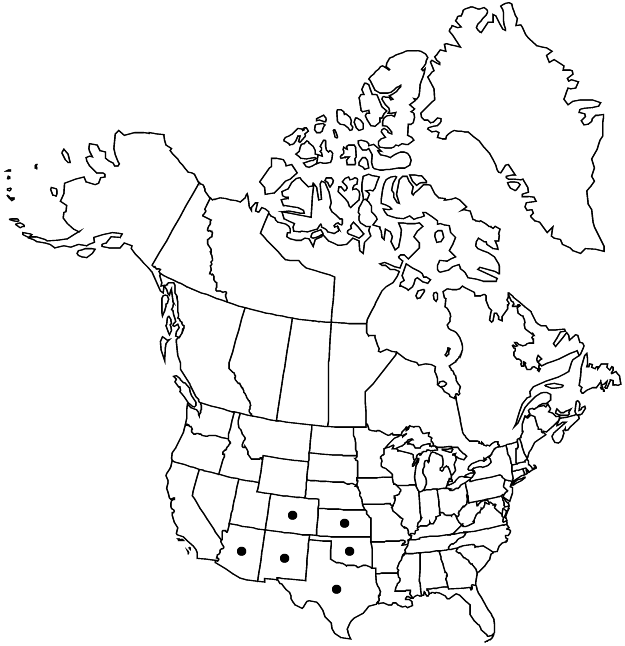Difference between revisions of "Eriogonum jamesii"
in A. P. de Candolle and A. L. P. P. de Candolle, Prodr. 14: 7. 1856.
RevisionBot (talk | contribs) m (Bot: Adding category Revision Pending) |
imported>Volume Importer |
||
| Line 1: | Line 1: | ||
{{Treatment/ID | {{Treatment/ID | ||
|accepted_name=Eriogonum jamesii | |accepted_name=Eriogonum jamesii | ||
| − | |accepted_authority=Bentham | + | |accepted_authority=Bentham |
|publications={{Treatment/Publication | |publications={{Treatment/Publication | ||
|title=in A. P. de Candolle and A. L. P. P. de Candolle, Prodr. | |title=in A. P. de Candolle and A. L. P. P. de Candolle, Prodr. | ||
| Line 8: | Line 8: | ||
}} | }} | ||
|common_names=Antelope sage | |common_names=Antelope sage | ||
| + | |special_status={{Treatment/ID/Special_status | ||
| + | |code=F | ||
| + | |label=Illustrated | ||
| + | }} | ||
|basionyms= | |basionyms= | ||
|synonyms= | |synonyms= | ||
| Line 20: | Line 24: | ||
-->{{Treatment/Body | -->{{Treatment/Body | ||
| − | |distribution= | + | |distribution=Ariz.;Colo.;Kans.;N.Mex.;Okla.;Tex.;including Mexico. |
|discussion=<p>Varieties 3 (3 in the flora).</p><!-- | |discussion=<p>Varieties 3 (3 in the flora).</p><!-- | ||
--><p><i>Eriogonum jamesii</i> is a nectar source for the rare Spalding dotted-blue butterfly (Euphilotes spaldingi).</p><!-- | --><p><i>Eriogonum jamesii</i> is a nectar source for the rare Spalding dotted-blue butterfly (Euphilotes spaldingi).</p><!-- | ||
| Line 54: | Line 58: | ||
-->{{#Taxon: | -->{{#Taxon: | ||
name=Eriogonum jamesii | name=Eriogonum jamesii | ||
| − | |authority=Bentham | + | |authority=Bentham |
|rank=species | |rank=species | ||
|parent rank=subgenus | |parent rank=subgenus | ||
| Line 60: | Line 64: | ||
|basionyms= | |basionyms= | ||
|family=Polygonaceae | |family=Polygonaceae | ||
| − | |distribution= | + | |distribution=Ariz.;Colo.;Kans.;N.Mex.;Okla.;Tex.;including Mexico. |
|reference=None | |reference=None | ||
|publication title=in A. P. de Candolle and A. L. P. P. de Candolle, Prodr. | |publication title=in A. P. de Candolle and A. L. P. P. de Candolle, Prodr. | ||
|publication year=1856 | |publication year=1856 | ||
| − | |special status= | + | |special status=Illustrated |
| − | |source xml=https:// | + | |source xml=https://bitbucket.org/aafc-mbb/fna-data-curation/src/2e0870ddd59836b60bcf96646a41e87ea5a5943a/coarse_grained_fna_xml/V5/V5_753.xml |
|subfamily=Polygonaceae subfam. Eriogonoideae | |subfamily=Polygonaceae subfam. Eriogonoideae | ||
|genus=Eriogonum | |genus=Eriogonum | ||
| Line 72: | Line 76: | ||
}}<!-- | }}<!-- | ||
| − | --> | + | -->[[Category:Treatment]][[Category:Eriogonum subg. Oligogonum]] |
| − | |||
| − | [[Category:Treatment]] | ||
| − | [[Category:Eriogonum subg. Oligogonum | ||
| − | |||
Revision as of 23:13, 5 November 2020
Herbs or subshrubs, compact or spreading, matted, 0.5–2.5 × 3–15 dm, tomentose to floccose. Stems: caudex absent or spreading; aerial flowering stems erect, slender, solid, not fistulose, usually arising directly from a taproot, 0.5–1.5 dm, tomentose to floccose. Leaves basal, typically not in rosettes; petiole 0.5–6 cm, tomentose to floccose; blade usually narrowly elliptic, 1–3(–3.5) × (0.3–)0.5–1(–1.2) cm, densely tomentose abaxially, thinly tomentose, floccose or glabrous and grayish to greenish adaxially, margins entire, plane or undulate and crisped. Inflorescences umbellate or compound-umbellate, 10–30 × 10–25 cm; branches tomentose to floccose; bracts 3–9, semileaflike at proximal node, 0.5–2 × 0.2–1 cm, often scalelike distally. Involucres 1 per node, turbinate, 1.5–7 × 2–5 mm, tomentose to floccose; teeth 5–8, erect, 0.1–0.5 mm. Flowers 3–8 mm, including 0.7–2 mm stipelike base; perianth white to cream, densely pubescent abaxially; tepals dimorphic, those of outer whorl lanceolate to elliptic, 2–5 × 1–3 mm, those of inner whorl lanceolate to fan-shaped, 1.5–6 × 2–4 mm; stamens exserted, 2–4 mm; filaments pilose proximally. Achenes light brown to brown, 4–5 mm, glabrous except for sparsely pubescent beak.
Distribution

Ariz., Colo., Kans., N.Mex., Okla., Tex., including Mexico.
Discussion
Varieties 3 (3 in the flora).
Eriogonum jamesii is a nectar source for the rare Spalding dotted-blue butterfly (Euphilotes spaldingi).
Eriogonum jamesii and E. arcuatum (see below) are considered “life medicines” and used ceremonially by Native Americans (C. Arnold, pers. comm.; A. B. Reagan 1929; P. A. Vestal 1952).
Selected References
None.
Lower Taxa
Key
| 1 | Leaf margins undulate, frequently crisped; flowers 3-5(-6) mm; se Arizona, s New Mexico, sw Texas | Eriogonum jamesii var. undulatum |
| 1 | Leaf margins plane, not crisped; flowers 4-8 mm; e Arizona, c and s Colorado, wc Kansas, New Mexico, w Oklahoma, n and w Texas | > 2 |
| 2 | Inflorescences compound-umbellate; e Arizona, c and s Colorado, New Mexico, w Oklahoma, n and w Texas | Eriogonum jamesii var. jamesii |
| 2 | Inflorescences simple-umbellate; wc Kansas | Eriogonum jamesii var. simplex |